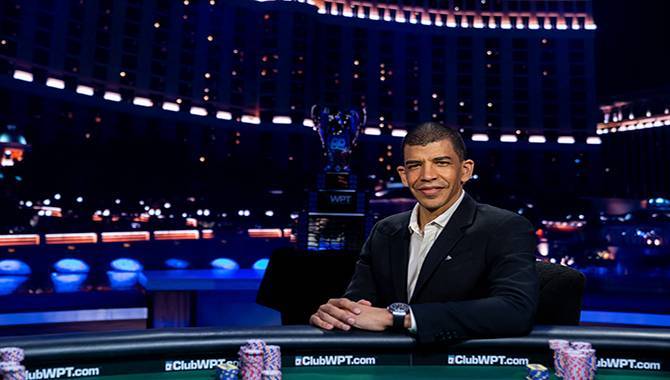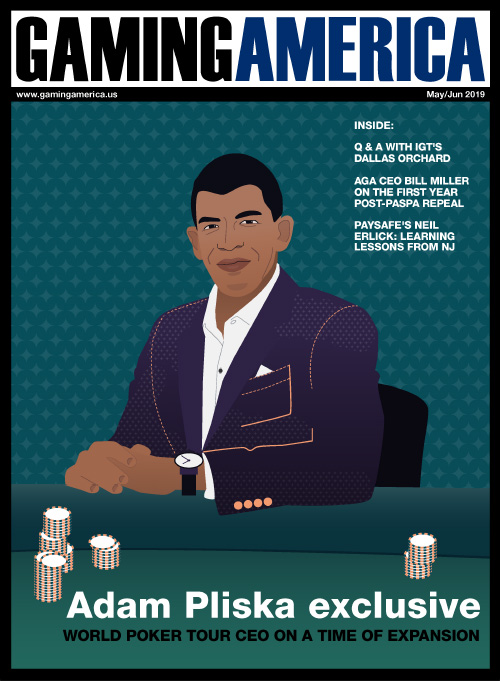
The World Poker Tour (WPT) debuted on the Travel Channel in 2003, bringing a new concept to television – showing players’ hole cards so viewers could get an insight into how world-class card players bet and bluffed with certain hands. It was an instant hit and soon became the highest-rated show on the channel.
However, moving beyond the concept of televised poker to a successful company would take several years. Sixteen years after that debut, the WPT now boasts several tours - one for every bankroll - and events all over the globe. Its programming still earns decent ratings on Fox Sports and the tour has entered into partnerships in recent years with major online operators 888Poker and PartyPoker.
The tour runs its own sweepstakes online poker site, an online poker academy and initiatives to get more women into the game. In March, the company announced a five-year Latin American deal with TV Azteca that could see it grow even more. As President and CEO of the WPT since 2009, Adam Pliska is tasked with preparing the WPT for a comeback of sorts.
It was a busy March for the WPT. The top-level Main Tour held two events in California, one in Spain and one in Las Vegas. The WPTDeepStacks, a lower flight with buyins under $1,500, made stops in Argentina, South Africa, Belgium, and Florida and Maryland in the US.
The smaller buy-in WPT500 also held an event in Barcelona. The WPT extends that kind of business and exposure with its new deal with TV Azteca – adding an even bigger presence in Latin America and growing its audience there. The agreement stands out, in regards to the broadcast deal. Unlike in the US, the tour’s events will be aired on a major over-the-air (not cable) broadcast channel.
TV Azteca is the most-watched sports network in Mexico and controls more than 40 local broadcast and regional free-to-air stations. The network’s free-to-air stations reach more than 95% of the Mexican market. Some highlights of the agreement include:
- TV Azteca airing and promoting the WPT throughout Mexico and Latin America.
- The tour licensing its brand to the network to develop social poker and gaming products customized exclusively for the Latin American marketplace.
- The agreement that Spanish commentators will be used to localize the tour’s 17 seasons of programming.
Beyond that, the network and tour have committed to co-producing at least 10 tournaments throughout Latin America each season. That includes two events on the Main Tour, eight DeepStacks events and WPT500 events as well – all encompassed as the new WPT LatAm Tour.
"This is a remarkable transformative deal for the World Poker Tour," Pliska tells Gaming America. "If you look at how the Latin American market and especially Mexico are situated, you have two major companies that control 95% of all free TV. You have 95% of all people still watching free TV as opposed to the US. Even when the WPT made its great impact in poker, it was on the Travel Channel, which was only available to 60 or 70 million Americans at the time.”
That exposure on free-to-air television, combined with the social gaming aspects and the increased number of live events, offers the tour a chance at growing in a mostly untapped market. The network’s parent company, Grupo Salinas, also has significant holdings in retail stores, an internet service provider, two soccer teams and thousands of retail store locations.
"You have a healthy ecology all the way around," Pliska says. "That’s the approach here. We’re in a true partnership. We really intend to go into the market by storm and this is going to solve an issue the poker world always deals with, which is not 'how do you get pro players to play poker?' They will always find a way to play. But how do you make more people interested enough to say: ‘Yeah, I like that and I can play.’”
Along with the TV Azteca agreement, the WPT reached a deal with Zynga in 2018. Zynga runs the biggest social poker game in the world and now has WPT-branded games and tournaments, while it is also a tour sponsor. These agreements are part of a broader effort to make the company more of an international entertainment brand than just a broadcaster of poker tournaments.
WPT makes heavy use of social media and live streams final tables online at numerous events that are not broadcast on television. In March, the tour began filming televised final tables at the HyperX Esports Arena in Las Vegas at the Luxor Casino. The arena allows the tour to cut production costs, but makes for an interesting live poker dynamic in the state-of-the-art facility.
"I think if you look from where we started, we were very television-based," Pliska says. "We were about highlighting very few $10,000 tournaments. We’ve now become a place that serves all poker interests. Before, we were the presenters or voyeurs for people who wanted to see what happens when players put in $10,000, and people thought that was just an amazing amount of money at that time. That was a curiosity and the curious players were coming out to play.
"What we’ve realized over time is that the World Poker Tour serves many different audiences. It serves absolutely serious pro players. It serves casual players who want to feel like they have a chance and an aspirational goal, so they can play a 500 series or work up to a DeepStacks. We also get those who are still just a fan and want to watch good entertainment on TV."
Catering to those audiences has allowed the tour to grow beyond a 'poker voyeur' and it now has a significant footprint at all levels of poker. From an entertainment and leisure perspective, the WPT offers a travel incentive to see the world and play cards. The company even sponsors poker cruises and hosts its own travel site to help players plan their trips for the next event.
"We get those who want to see the world with people who share their interests," Pliska says. "You’ve seen a lot more focus on travel. We get a lot of people who say: ‘You know what, I’m never going to be a pro, but I would love to see what a certain city or country is all about. I’d like to go down there and experience the culture under a unique circumstance with people whose company I enjoy.’"
That idea seems to have taken the tour back to its roots – fitting for a show that started and found success on the Travel Channel.
Running a global poker tour isn’t without its challenges. There are other competing tours from smaller enterprises to major presences like the World Series of Poker. Some players weren’t happy about moving final tables to Las Vegas. Finding a niche in a busy television marketplace also isn’t easy.
But the WPT has history and reputation on its side, and players keep returning for more action. After poker slowed a few years after the major boom of the 2000s, the industry has been rejuvenated. One of the WPT’s signature events, the $10,000 WPT Five Diamond World Poker Classic, drew a record 1,001 entries to the Bellagio in Las Vegas in December.
Other events have drawn huge fields in the last couple of years, and the tour shows no signs of letting up. In December, Black Ridge Acquisition Corporation announced it was acquiring the WPT and an esports sister property from Ourgame, a social gaming firm based in China. Ourgame purchased the brand from operator BwinParty in 2015, for $35m.
Ourgame may not have been an ideal owner for the company, after China banned online poker in 2018, including social gaming. The combined company will be renamed Allied Esports Entertainment, and is expected to trade on the Nasdaq Capital Market under the ticker symbol AESE. The purchase brings one of the tour’s founders, Lyle Berman, back to the company. A businessman, longtime poker player and a member of the Poker Hall of Fame, Berman has 40 years' experience in the gaming industry.
That includes serving as a director of Golden Entertainment, which manages several casinos, mostly in Nevada, and several restaurant and pub chains. He’ll serve as Allied Chairman alongside his role at Golden Nugget. The deal with TV Azteca also includes esports and Berman and Pliska believe there is a big market for that as well.
"Poker is very much a young man's game and it appears a lot of young men play esports as well, but I think our synergy is more about the type of business rather than that the players have crossed over,” Berman told USPoker.com. "There are so many millions more people that play esports. Crossover's nice, but we're more focused just on the esports player."
As for WPT events in Latin America, there isn’t a timetable yet on when the first events will kick off. But those should begin this year and a schedule will be released soon, with social gaming, live tournaments and televised WPT coverage on TV Azteca by this summer. Social gaming offers the WPT some opportunities for expansion as well, with the possibility of some day expanding into real-money online poker.
"What we see in terms of social gaming demonstrates what brands could be the natural affiliates of real-money gaming,” Pliska says. "Obviously, the WPT has a long history of being a promoter of real-money gaming for those who wish to play, whether it's been through a relationship with PartyPoker or PokerStars through the years and we’re obviously doing things with 888. These are steps that can lead to that. I don’t anticipate us being a platform operator. But will we work with a platform operator to bring the WPT into real-money gaming? I think that is quite likely."
Pliska is excited about where the company’s headed and similar deals could be in the works. "We are having some very interesting discussions, but because we’re currently in an acquisition period, I have to be careful in discussing anything concrete at the moment unless we were making a full announcement," he says. "But I’m very optimistic about strategically situated partners and finding great ways to go into particular regions in the future."
Sean Chaffin is a freelance writer in Crandall, Texas, and his work appears in numerous websites and publications. Follow him on Twitter @PokerTraditions

